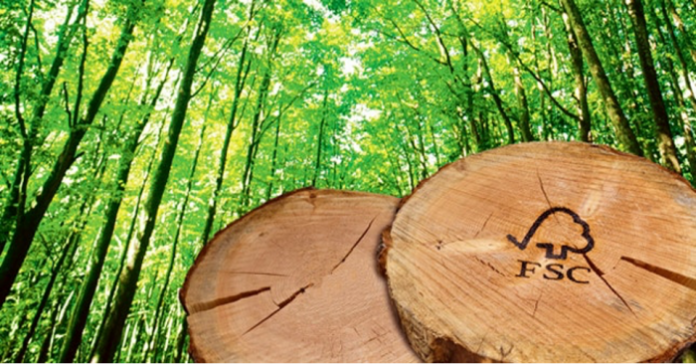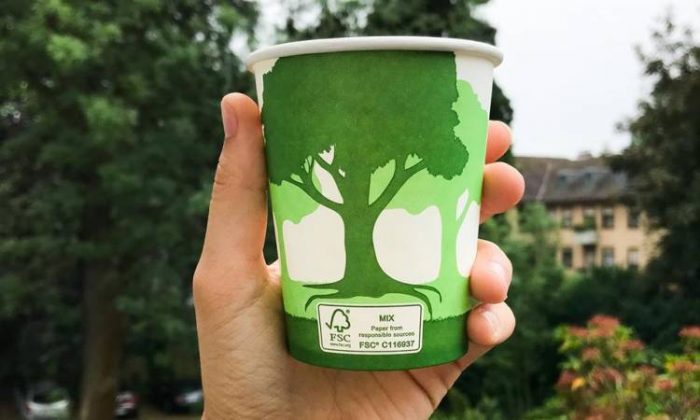
Have you ever looked at the labels of any product (e.g. milk carton) and noticed the FSC logo? Have you ever wondered about the effects of our economic choices on the environment? FSC’s mission starts with the desire to find an answer to this and takes the form of socially useful, environmentally friendly and economically sustainable forest management.
The acronym FSC stands for Forest Stewardship Council: an international, non-profit, non-governmental organisation founded in 1993. In Italy it originated in 2001 and since 2011, Diego Florian, a graduate in Forestry and Environmental Sciences, has been directing the FSC National Office with the task of coordinating the staff and activities of FSC Italy in accordance with international guidelines. There are about 900 members of the organisation: individuals, technicians, researchers, NGOs, environmental, social and large-scale retail groups, forest owners, wood and paper companies. FSC is structured as follows: a General Manager, the General Assembly of Members, i.e. a body divided into three chambers representing environmental, social and economic interests (this division guarantees a fair distribution of voting power and decision-making balance between the countries of the North and South of the world) and finally the General Executive Committee (the permanent governing body of the Assembly of Members) made up of 9 representatives elected by the three chambers of the Members and with a 3-year term of office.
FSC affirms itself as an advocate not only of sustainability, but also of the legality of products derived from forests. Just think that – according to estimates extrapolated from Interpol data of 2012 – 30% of the wood in the world is traded illegally and generates a profit of about 8.5 billion euros, while in Italy the estimated illegality is 10% with a revenue of 2.1 billion euros. The profitability of dirty money is the cause of unfair competition and strong competitiveness at the expense of certified and sustainable production processes. According to Interpol (International Criminal Police Organisation), illicit trafficking in wood and timber products ranks second, in terms of profitability for the benefit of organised crime, after the drug trade. Combating this phenomenon becomes essential: lawlessness, deforestation and degradation threaten the world green lung with all the risks and serious consequences that result. The only instrument capable of countering the undue timber market is certification.
Proper forest management can be achieved by voluntarily adhering to an independent, third-party, universally valid certification system specific to the forestry sector. There are three stakeholders involved:
- Accreditation body: it supervises the certification body
- Accredited certification body: it verifies good forest management and checks traceability of products
- Organization: who wants to obtain certification
There are two types of certification: Forest Management (FM) and Chain of Custody (Coc). The first, the Certificate of good forest management, is aimed at forest and plantation owners and can be individual, group or small forest properties or community forests SLIMF (Small and Low Intensity Managed Forests). To obtain this type of certification it is mandatory to comply with the 10 Principles and related Criteria (P&C) of good forest management defined by the FSC internationally and applied specifically to different local realities, characterized by typical ecological and administrative characteristics. Overcoming the steps related to obtaining the Coc it is possible to sell wood and derivatives as actually “certified”. The Chain of Custody Certification (individual, group, project, multisite) ensures that wood and forest products (wood and non-wood) come from forests managed according to FSC Principles and Criteria. The labels, with which certified goods are distinguished, are world-wide approved and approved by the Forest Stewardship Council; different in size, languages and colors, they are divided into three categories, according to the percentage of certified or recycled wood contained in the products:

- FSC 100% contains only material from FSC certified forests.
- FSC Mist includes FSC certified materials (at least 70%), “controlled wood” and/or post-consumer recycled materials. The controlled wood must not come from: forests used illegally or whose management violates civil or traditional rights; forests not certified to High Conservation Value; natural forests converted into plantations or other forms of land use or forests with genetically modified trees.
- FSC Recycled contains only recycled materials (of which at least 85% post-consumer, ie no longer usable).
The activity of the FSC is in line with the development strategies set out in the 2030 agenda and in particular with objective 12: responsible consumption and production. The responsible economy is based on conscious economic choices. Information plays a crucial role in determining the consumer’s demand and the convenient supply that the manufacturer decides to launch. Consumers, properly informed and educated, could make a difference in a market whose existence (and competitiveness) is largely determined by the ethical propensities and economic choices of buyers.
Shaking citizens’ consciences and raising awareness of sustainable goods and services are the prerequisites for positive developments.
“Do you think the adults will have put the world back when they pass it to us?” Bill Watterson
For more information on FSC visit: Home Page | Forest Stewardship Council (fsc.org)



































